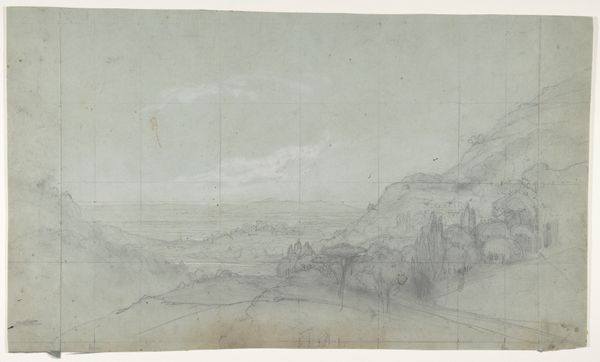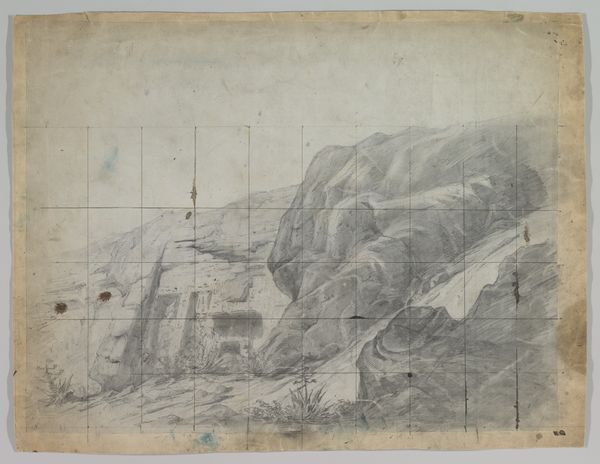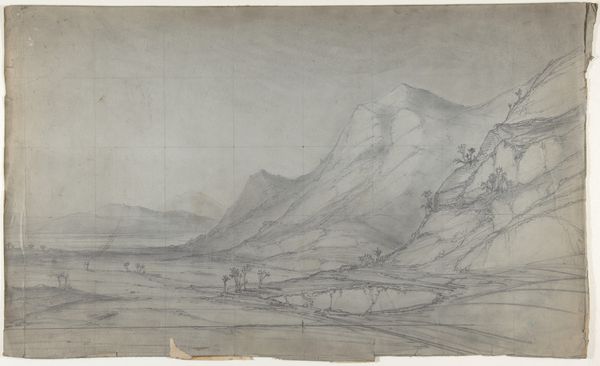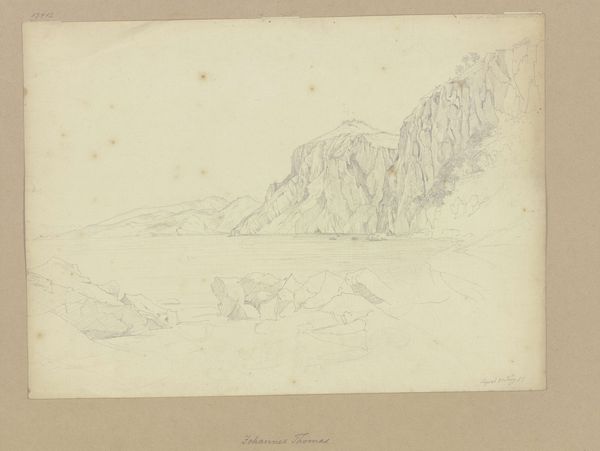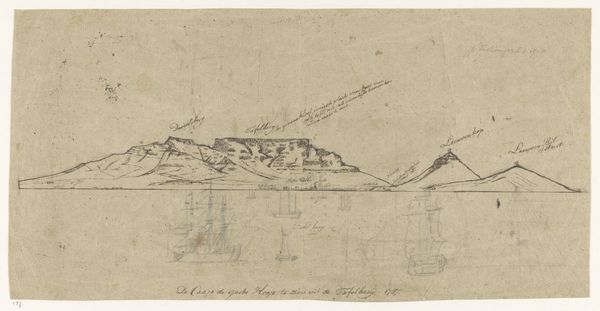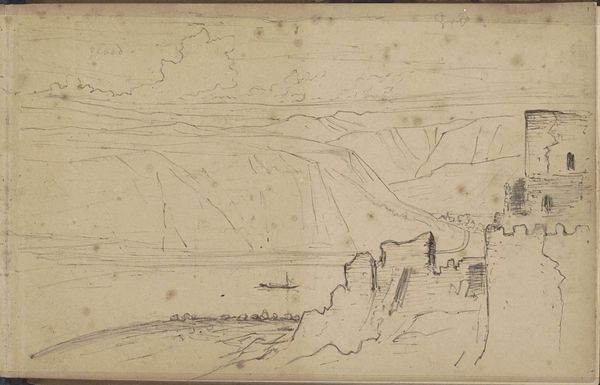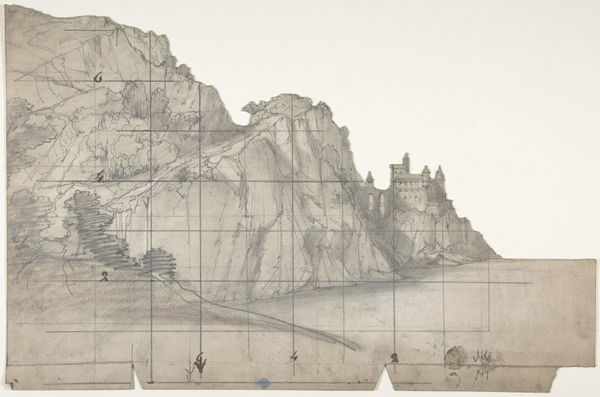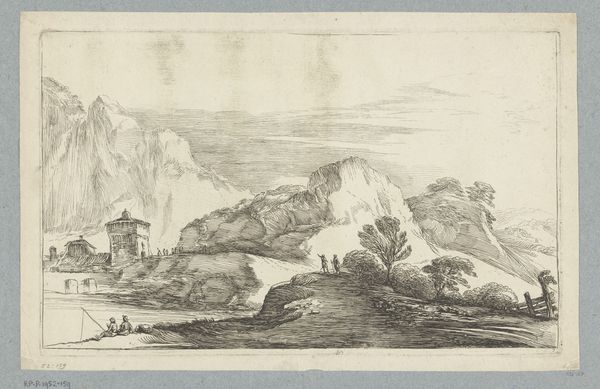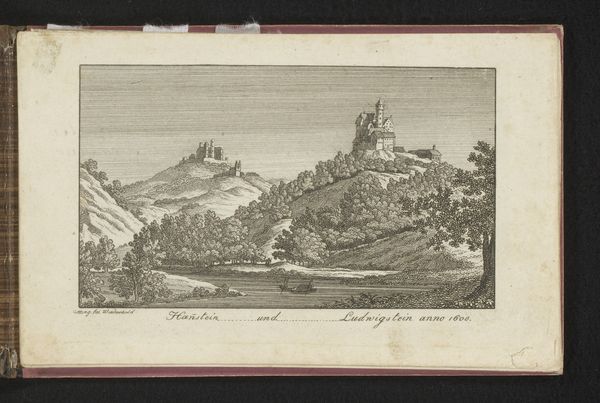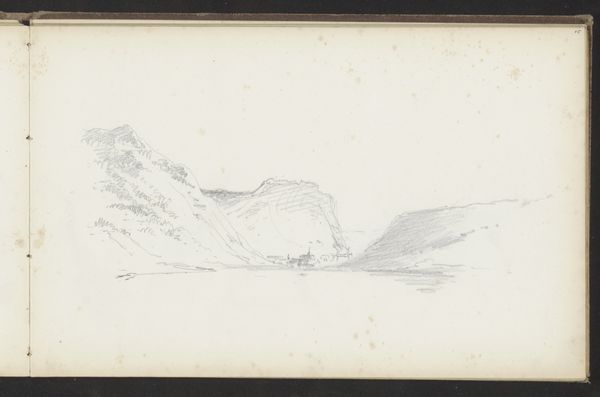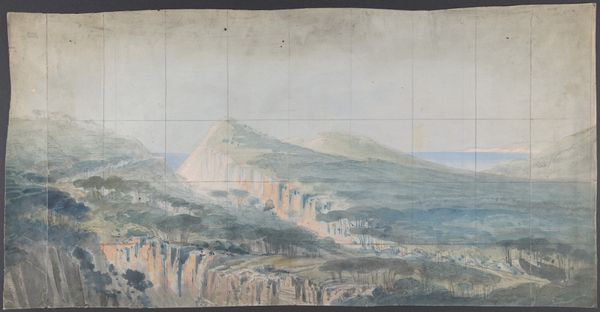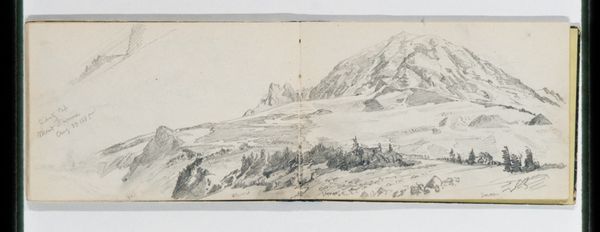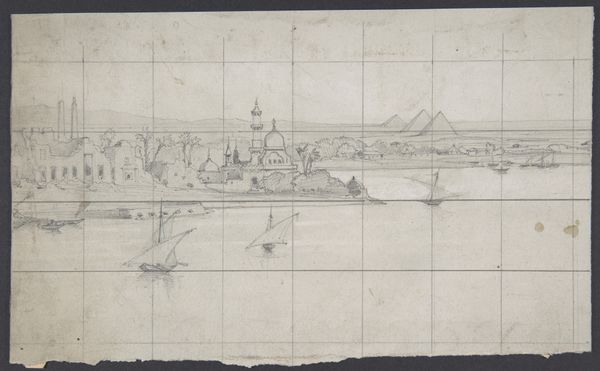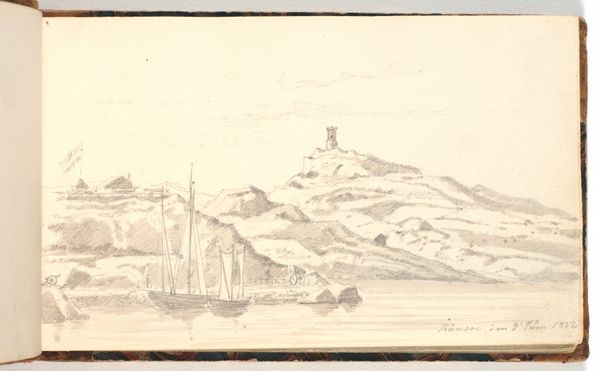
Copyright: Public Domain
Eugène Cicéri created this stage set design with graphite and watercolor on paper during the 19th century. At first glance, it looks like any other landscape drawing of the period. However, the grid lines are a visual cue, and the cut marks at the bottom edge of the paper further suggest its purpose: to be enlarged and translated into a full-scale backdrop, most likely by teams of scenic painters working collaboratively. What’s remarkable here is the interplay between the artist’s original vision, expressed in the intimate media of pencil and watercolor, and the labor-intensive work of scaling it up for the stage. The design would have been carefully transferred onto enormous canvases and then brought to life with broad brushstrokes and vibrant pigments. In this way, the artist's skill converges with that of artisans in service of theatrical spectacle. Considering the material reality and the context of production helps us appreciate how this drawing bridges the worlds of art and craft, inviting us to reconsider conventional hierarchies.
Comments
No comments
Be the first to comment and join the conversation on the ultimate creative platform.
